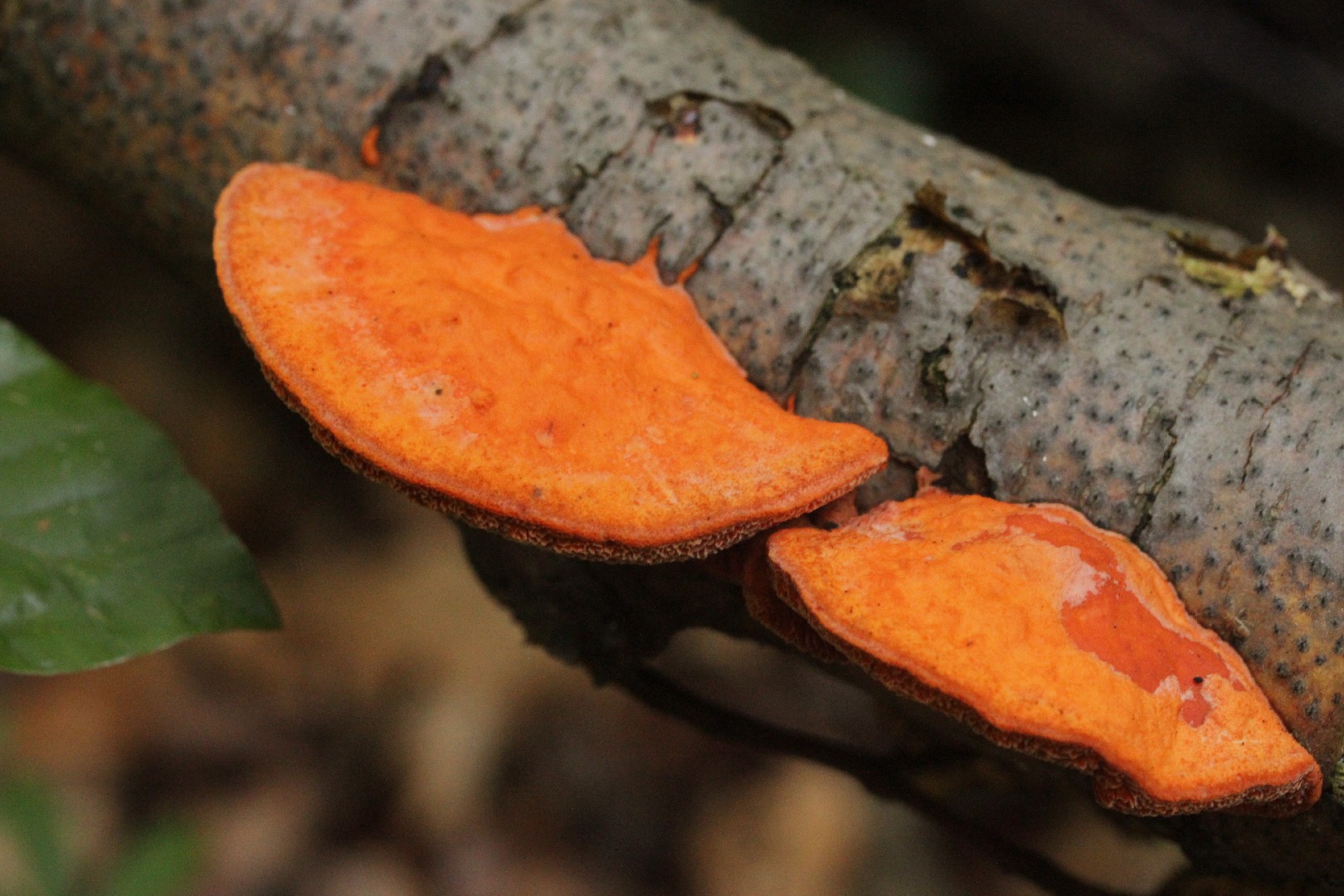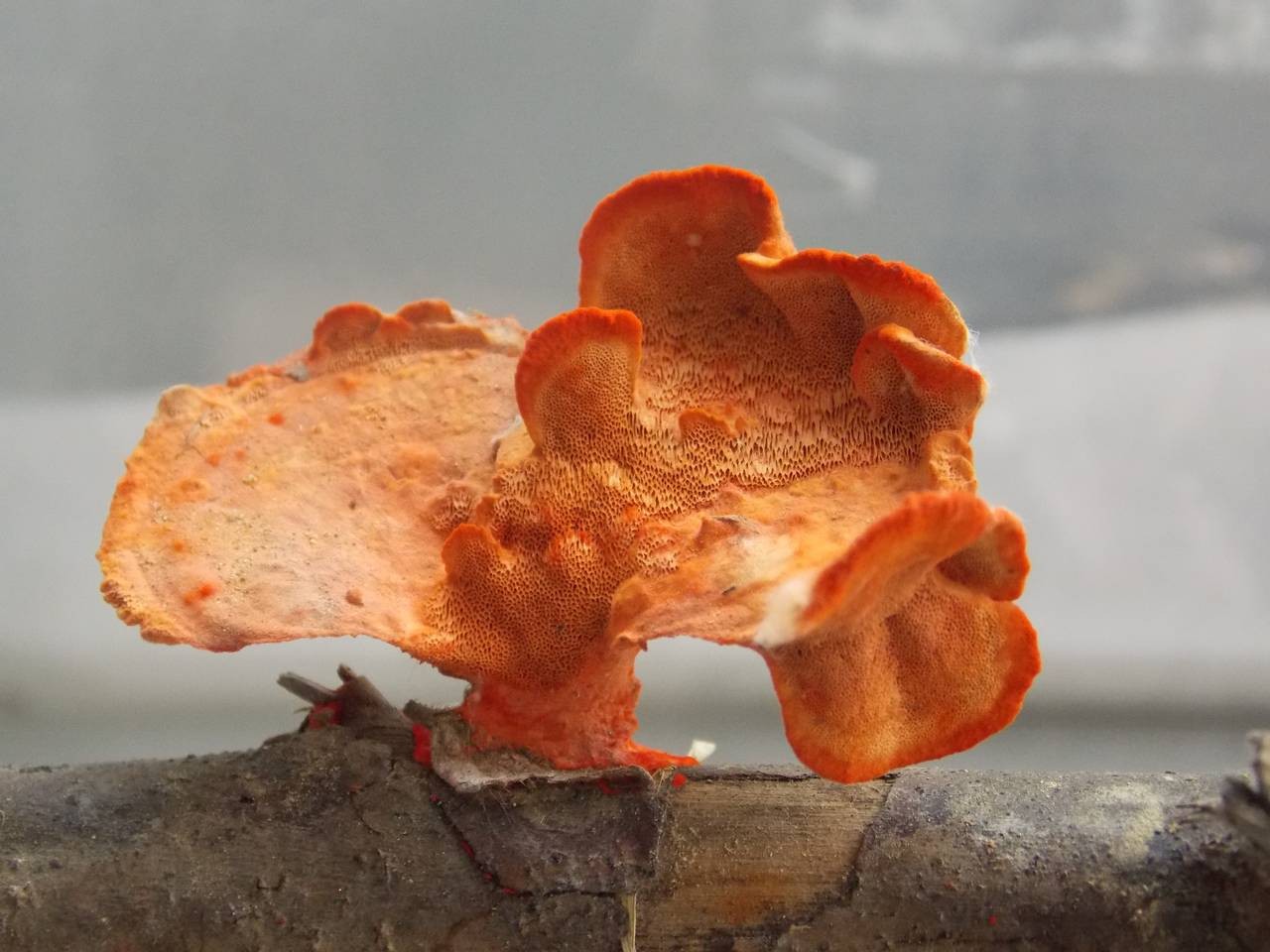Cinnabar polypores
Scientific name: Pycnoporus
Cinnabar polypores
Scientific name: Pycnoporus
 Photo By Björn S. , used under CC-BY-SA-3.0 /Cropped and compressed from original
Photo By Björn S. , used under CC-BY-SA-3.0 /Cropped and compressed from original Description
Cinnabar polypores are known for their bright reddish-orange color, making them quite striking in natural settings. They typically grow on dead or decaying wood. One fascinating aspect is their use in traditional medicine for their potential antibacterial properties. Additionally, cinnabar polypores produce a unique enzyme that can break down tough plant fibers, which has applications in biofuel production and paper processing.
Species of Cinnabar polypores
Scientific Classification
Phylum
Club fungi Class
Mushroom-forming fungi Order
Shelf fungi Family
Polyporaceae Genus
Cinnabar polypores 